
Elisa Oddone, The Jordan Times
AMMAN — Work by artists from across the Middle East showcasing the region’s political and social reality amid the wave of Arab revolts are on display in Germany along with artwork documenting mass protests worldwide, in the first attempt to chart global activism artistically.
Focusing on the new forms of spontaneous mass demonstrations spanning from the Arab Spring to the Spanish Indignados and the Occupy movement, the exhibition “global aCtIVISm” in Karlsruhe highlights abuses in the political sphere with artists calling for changes to existing conditions.
“A new form of world-wide activism driven by citizens and spawned by globalisation, technological developments, and the expansion of art has emerged in the last decade, as the word CIVIS, Latin for citizen, highlighted in aCtIVISm emphasises,” curator Elisabeth Klotz told The Jordan Times.
“We tried to shift the public’s attention to grass-roots activism, which emerged in different parts of the world while attempting to tackle the widespread cultural pessimism towards the power of consumerism.”
Combining art, politics and mass media via photographs, video installations and artistic performances, the German Centre for Art and Media has become a worldwide leading cultural institution over the years, challenging information technology and today’s changing social structures.
“People are increasingly surrounded by new technology, which triggers direct responses when activated and whose speed contrasts sharply to the limited options for action in the field of politics,” Klotz said. “There, on the contrary, citizens only have an opportunity once every few years to cause a reaction by casting their vote.”
The effect is that people have decided to take to the streets worldwide.
The indignados (the outraged) took over public squares around Spain nearly three years ago protesting against the economy being run for the benefits of the banks and not the people, simultaneously, a spontaneous encampment of the Occupy Wall Street movement in Manhattan opposing social and economic inequality spread to cities across North America and Europe.
“We travelled the world looking for materials for the exhibition, meeting people and doing research on the ground especially collecting suggestions from local activists and ending up with 100 different standpoints”.
A six-metre long and five-metre high Greenpeace banner, which hung from the tower of the Deutsche Bank’s headquarters in Frankfurt in 2009 reading “If the world were a bank you would have saved it long ago,” is on display at “global aCtIVISm”.
Photos of political graffiti in Cairo, videos of action artwork by Moroccan artist Mohamed Laouli to draw attention to the country’s lack of animal rights and Jordanian photographer Muath Freij’s pictures about protests of Syrian refugees show the German public the problems of a region in turmoil.
Regime changes and ongoing civil wars have marked the situation of Arab Spring countries since 2010, with long-time rulers in Tunisia, Egypt, Libya and Yemen being swept away.
“Freij’s pictures belong to a documentary work of aCtIVISm, which casts a glance at the different repercussions of a conflict people did not want or ask for,” Klotz said.
Civil unrest that began with small, localised protests in the Syrian city of Daraa, near the Jordanian border in March 2011, escalated into a civil war which has so far claimed more than 115,000 lives, displaced several millions internally and externally and has no clear resolution in sight.
“Syrians used to protest frequently immediately after the onset of the conflict, once or twice a week,” Freij told The Jordan Times. “Over the past year, the number and scale of the protests have decreased. People are now more focused on helping refugees rather than holding protests.”
Some 600,000 displaced Syrians have found sanctuary in the Kingdom so far.
“People take to the street because they want a new and better life, freedom and more justice hoping in a change that will make things better compared to the past,” the 28-year-old photojournalist from Amman said, adding that artists have a responsibility today to document what it is happening both from a political as well as a social level.
In line with the concept of Artivismus — coined at the Centre for Art and Media, which considers every activist a possible artist — Freij said anybody could contribute documenting political events and grass-roots form of mass protests.
“Everyone has a camera nowadays and can take videos or photos of protests. This sort of art is just at its beginning, it will grow and get bigger and bigger accompanying the demands and needs of the people.”
“global aCtIVISm” runs until March 30.
Latest News
-
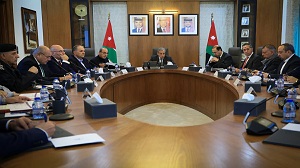 Defective used gas Heaters behind recent suffocation deaths — probe
Defective used gas Heaters behind recent suffocation deaths — probe
-
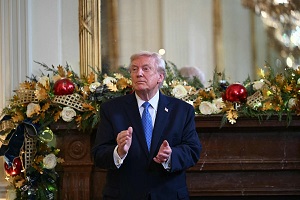 Trump imposes full travel bans on seven more countries, Palestinians
Trump imposes full travel bans on seven more countries, Palestinians
-
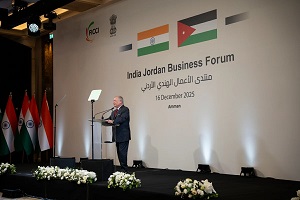 King, India PM attend opening session of India-Jordan Business Forum
King, India PM attend opening session of India-Jordan Business Forum
-
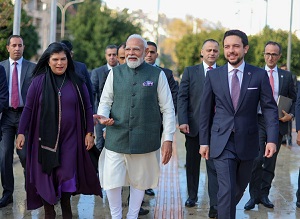 Crown Prince accompanies India PM on visit to Jordan Museum
Crown Prince accompanies India PM on visit to Jordan Museum
-
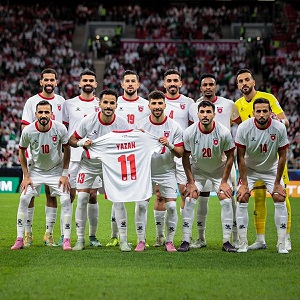 Jordan beat Saudi Arabia to reach Arab Cup final
Jordan beat Saudi Arabia to reach Arab Cup final